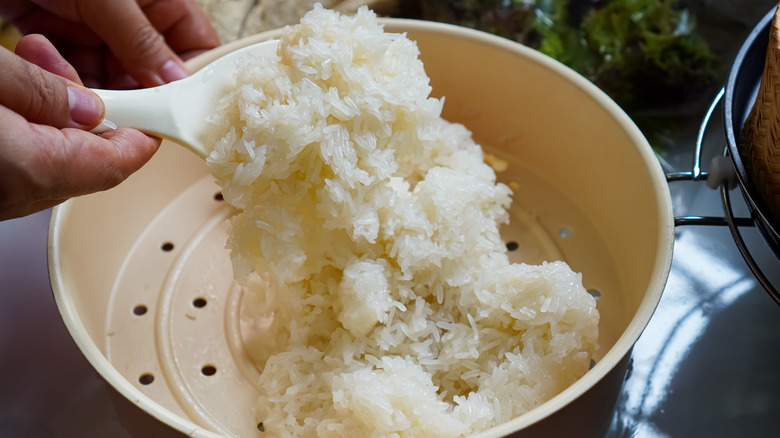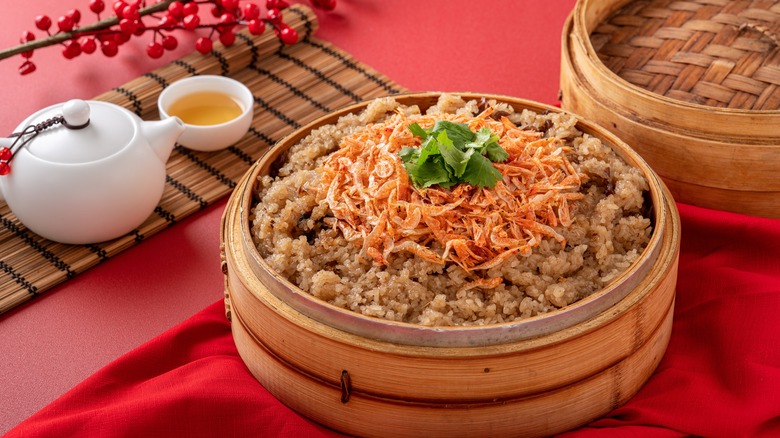For The Absolute Best Sticky Rice, Don't Rinse It
In most Western culinary traditions, the ideal texture for rice is fluffy, light, and dry enough that we can distinguish each individual grain. Consequently, most rice recipes require you to rinse the rice before boiling it to rid it of the starches that might thwart the desired texture. Sticky rice is a glaring exception to this rule. A taste of Thai mango sticky rice or Chinese sticky rice balls is a testament to why this type of rice is valued for its namesake descriptor.
Aptly named, sticky rice is a category of glutinous rice varieties that encompasses purple, black, Japanese sweet, and Thai sticky rice. All rice varieties contain two types of starch known as amylopectin and amylose. These starches dictate the texture of rice, with amylose being the long, firm compound associated with the light and fluffy rice varieties and amylopectin gelatinizing when cooked and making up for the majority of the starch in sticky rice. When we rinse amylose-rich rice varieties, we want to get rid of as much of both types of starch as possible so the grains don't stick together. However, the opposite is true for amylopectin-rich sticky rice.
You don't want to rid sticky rice of the very starches that make it sticky by running it through multiple rinse cycles. Luckily, this will save you some extra steps in the rather tedious and temperamental cooking process sticky rice demands.
More tips for sticky rice preparation and enjoyment
Due to its composition, sticky rice absorbs water much slower than other types of rice with less starch. Therefore, sticky rice has a unique and tedious preparation and cooking method that requires you to soak it for hours or, better yet, overnight. Similar to soaking garbanzo beans, the soaking period saturates the sticky rice grains with water which reduces cooking times. However, unlike boiling beans post-soak, sticky rice is traditionally steamed.
Bamboo steamer baskets are the go-to method used in Southeast Asia and China. But if you don't have one, you can use a steel steamer basket or cheesecloth to elevate the drained, soaked rice over a pot of simmering liquid for anywhere from 20 to 40 minutes depending on the type of sticky rice. The rice will stick together, allowing you to flip it halfway through so that all the grains are nice and chewy.
There's another clever stovetop method that's quicker and easier, still. You can add soaked rice and water to a pot, bringing it to a simmer. However, instead of sealing the lid of the pot, you'll let the rice simmer uncovered. This will cause the steam to release more rapidly and the water to evaporate in around 10 minutes. Then, you'll cover the pot, take it off the heat, and let it steam for another 10 minutes to set.

